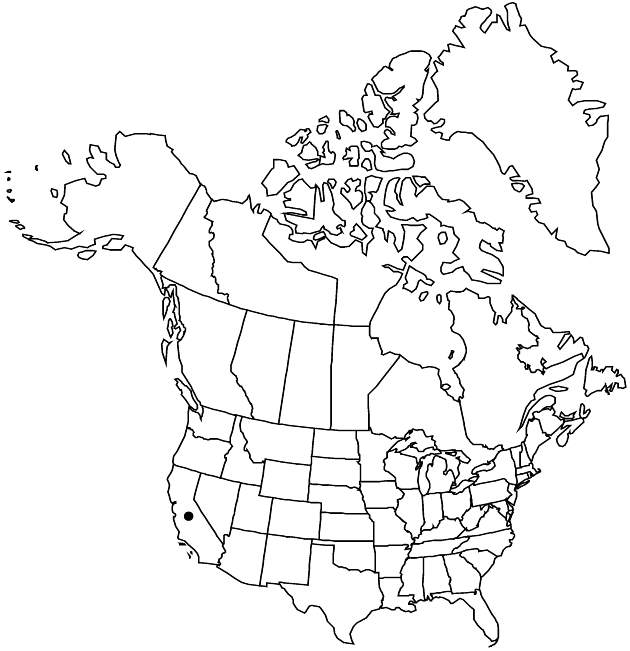Calycadenia spicata
Fl. Francisc. 4: 422. 1897.
Plants 20–60 cm; self-incompatible (herbage gray-green, pleasantly scented). Stems simple or branched (branches 1–6, ± ascending, mostly distal to midpoints, rigid), ± densely strigillose-hirsutulous, strigose (hairs longer, glandular distally). Leaves mostly alternate, 2–5 cm (often longest at midstems), hispidulous and ± long-hairy (especially proximal margins). Heads in glomerate-spiciform arrays (1–3+ per node). Peduncular bracts (15–20+, closely investing and concealing heads before flowering) narrowly lanceolate to lance-attenuate (± cylindric distally 1–3+ mm), 3–7 mm (hispidulous, ± bristly and/or pectinate-fimbriate), apices truncate to strongly concave, tack-glands 1 (terminal). Phyllaries 6–9 mm (± prominently nerved), abaxial faces (often reddish) hispidulous, often long-hairy, especially distally, tack-glands 1–5+. Paleae 6–9 mm (tack-glands usually 0). Ray florets 1–5; corollas white, fading reddish, tubes 3–4 mm (± papillate, sometimes with red “eyes”), laminae 6–11 mm (central lobes smaller than laterals, widest at bases, symmetric, laterals asymmetric, sinuses 1/3–2/3 laminae). Disc florets 4–11; corollas pinkish, 7–10 mm. Ray cypselae ca. 3 mm, smooth, densely appressed-hairy. Disc cypselae ca. 3 mm, appressed hairy; pappi of 9–16 lanceolate-aristate scales, mostly 3–6 mm. 2n = 8.
Phenology: Flowering summer.
Habitat: Dry, open meadows and hillsides
Elevation: 50–1400 m
Distribution

Calif.
Discussion
Calycadenia spicata is found in the Sierra Nevada foothills from Butte County to Kern County. Populations are often localized.
Selected References
None.